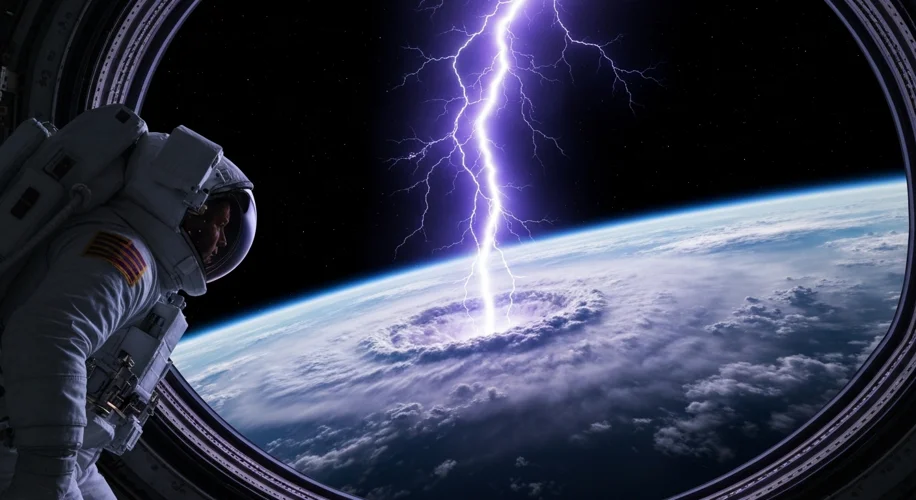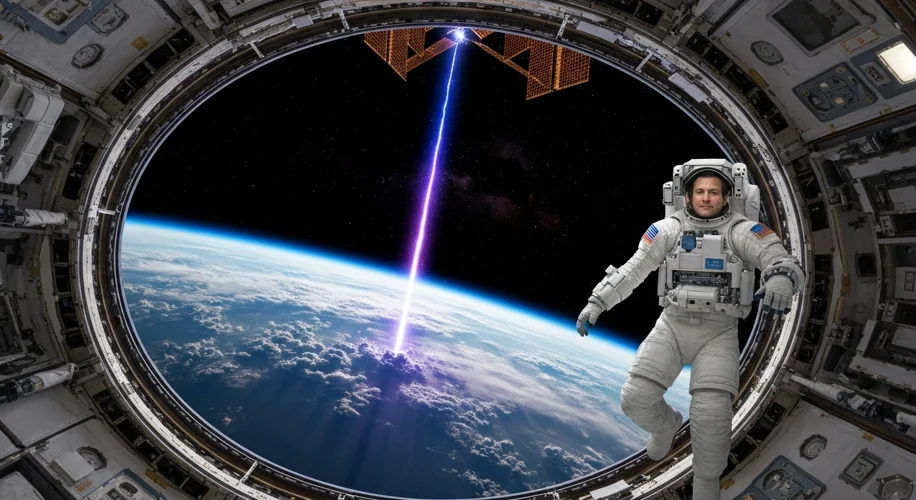The night sky, a canvas of infinite darkness punctuated by distant stars, holds secrets far beyond our terrestrial grasp. For millennia, humanity has gazed upwards, charting constellations and pondering the mysteries of the cosmos. Yet, sometimes, the most profound revelations about our own planet come from those who venture furthest from it.
On a recent orbit, an astronaut aboard the International Space Station (ISS) found themselves witnessing a phenomenon so rare, so powerful, it felt like a scene ripped from a science fiction epic. With a quick hand and a keen eye, they captured photographic evidence of a ‘gigantic jet’ – an awe-inspiring electrical discharge arcing from the top of a thundercloud all the way into the mesosphere, the layer of Earth’s atmosphere approximately 30 to 50 miles above the surface.

Gigantic jets, along with their more commonly observed cousins, sprites and blue jets, belong to a fascinating class of atmospheric electrical phenomena known as Transient Luminous Events (TLEs). Unlike the familiar lightning bolts that strike the ground, TLEs occur high above the clouds, often in response to the powerful positive charge building in the thundercloud’s anvil. These events are fleeting, typically lasting mere milliseconds, making them notoriously difficult to observe and document.
For decades, scientists have theorized about the existence and mechanisms behind these upper-atmospheric electrical displays. Early observations were often dismissed as optical illusions or misidentifications. However, as technology advanced, so did our ability to capture these elusive events. Ground-based observatories equipped with sensitive cameras and specialized filters began to record them, piecing together the puzzle of how such immense electrical currents could leap from the clouds to the edge of space.
The significance of the astronaut’s capture lies in its unique vantage point. From the ISS, orbiting at an altitude of roughly 250 miles, the gigantic jet could be seen not as a fleeting flash from below, but as a colossal bridge connecting the turbulent storms of Earth to the serene vacuum of space. The image provides an unparalleled perspective on the sheer scale of these discharges, revealing their intricate tendrils and the vastness of the atmospheric layers they traverse.
What causes these celestial fireworks? The prevailing theory suggests that during intense thunderstorms, a large positive charge can accumulate at the cloud tops. When this charge becomes strong enough, it can trigger a powerful upward discharge. A gigantic jet is essentially a supercharged version of a blue jet, extending much higher into the atmosphere. It’s a raw display of Earth’s immense electrical power, a reminder that even our planet’s atmosphere is a dynamic, energetic environment.
The implications of studying gigantic jets are far-reaching. Understanding these phenomena could shed light on the complex electrical balance of our atmosphere, the interaction between weather systems and the ionosphere, and even the potential impact on satellite communications and air travel. Moreover, these visually stunning events serve as a powerful reminder of the universe’s boundless wonders and the ever-present need for exploration and scientific inquiry.
This astronaut’s photograph is more than just a beautiful image; it’s a scientific document, a testament to human curiosity, and a breathtaking glimpse into the dramatic electrical ballet that unfolds, unseen by most, high above the world.

